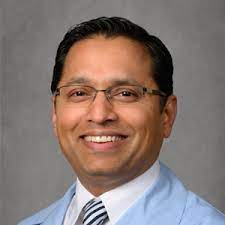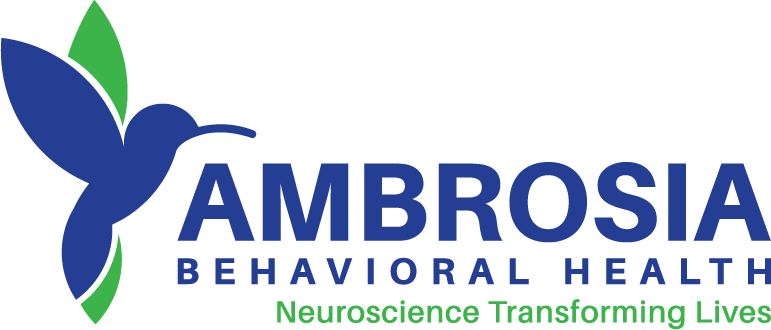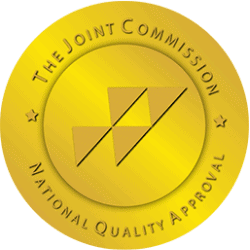Hydrocodone Addiction Treatment
Amazingly, one little pill labeled as a pain reliever can cause such misery. But that is just what hydrocodone can do.
This prescription medication was formulated with pain in mind, but it has the nasty ability to trigger euphoria. That has led to rising rates of addiction, a national overdose crisis, and a dire need for proper hydrocodone rehab care.
If you’re given a prescription for hydrocodone, you’ll need to know what addiction looks like and how to stay safe. And if someone you love has a problem, you might need to provide relief.
Hydrocodone addiction treatment at Ambrosia Treatment Center typically involves a combination of medical detoxification and therapy. If you are interested in addiction treatment for prescription medications in Florida, we can help.
The process begins with detoxification, where medical professionals supervise the patient to manage withdrawal symptoms safely. This phase aims to cleanse the body of the addictive substances.
Hydrocodone withdrawal symptoms can be quite severe and are often the reason why individuals find it difficult to stop using this drug. This is what makes hydrocodone detox essential. The withdrawal process can lead to several physical and mental symptoms, which may start within a few hours to a couple of days after the last dose.
Physical symptoms of hydrocodone withdrawal can include:
- Muscle aches and pains
- Sweating
- Runny nose
- Yawning excessively
- Teary eyes
- Insomnia
- Diarrhea
- Abdominal cramping
- Dilated pupils
- Fever
- Nausea and vomiting
On the psychological side, individuals withdrawing from hydrocodone might experience:
- Anxiety
- Restlessness
- Irritability
- Depression
- Mood swings
The severity and duration of these symptoms can vary based on several factors, including the length of time the individual has been using hydrocodone, the dosage they were taking, and their overall health.
It’s important to note that withdrawing from hydrocodone can be dangerous, potentially even life-threatening, if not properly managed. Therefore, it is recommended that individuals looking to stop using hydrocodone do so under the supervision of medical professionals who can provide support and manage withdrawal symptoms. If you are interested in drug and alcohol detox in West Palm Beach, give us a call today.
Following detoxification, the center provides treatments like our IOP in West Palm Beach and also therapy sessions to address the psychological aspects of addiction. These sessions may include individual counseling, group therapy, and family therapy. The goal is to help patients understand the root causes of their addiction, develop coping strategies, and prevent relapse.
Additionally, Ambrosia Treatment Center offers dual diagnosis treatment, which can be crucial for patients struggling with co-occurring mental health disorders alongside their addiction. This approach ensures that all aspects of a patient’s health are addressed, improving the chances of long-term recovery.
It’s important to note that each patient’s treatment plan at Ambrosia Treatment Center is tailored to their unique needs, taking into account factors like the severity and duration of the addiction, the presence of any co-occurring mental health conditions, and the patient’s personal and medical history.
By now, many of us are familiar with addiction treatment practices. We talk with counselors and work on changing our habits. We connect with others who can help us. These treatments can and certainly do help people with an addiction to prescription drugs. But there’s one more thing that can help.
Since hydrocodone changes brain chemistry, we can use pharmaceutical solutions to address the damage. The National Institute on Drug Abuse says medications like buprenorphine and methadone work on the receptors used by hydrocodone and other opioid drugs. They can soothe both withdrawal symptoms and drug cravings, so you can focus on therapies to help you change your behavior. When used in a combined fashion like this, they’re remarkably effective.
Some treatment teams also use holistic therapies to help you recover. You might learn to drop into a yoga class when you feel stressed rather than popping a pill. You might lean on art therapy to help you process prior trauma.
These interventions can sound silly, but they’re really helpful for some people working through a substance abuse problem.
``Am I an Addict Quiz”
Do You Need Prescription Opioid Abuse Treatment?
- Have you tried to quit and found that you can’t?
- Is your drug use interfering with your work or your relationships?
- Do you spend most of the day thinking about getting or using drugs?
- Have you blown your monthly budget on drugs?
- Has your doctor stopped refilling your prescription because of abuse?
- Have you stopped enjoying your life because of drugs?
These are scary questions. However, they are potential signs of hydrocodone addiction. Honest answers can help you understand how dangerous drug use is and why you should get help.
Treatment does work. With the right program and enough time, you can recover from even a severe hydrocodone addiction.
Hydrocodone was developed decades ago, but it didn’t become prominent in American medicine cabinets until the late 1990s. It quickly became a favorite with people looking for a cheap, easy-to-find high, but hydrocodone formulations come with a secret ingredient that can do intense damage.
Hydrocodone is an opioid medication typically prescribed for severe pain. It contains a synthetic version of opium, created through the chemical manipulation of poppy seeds. The National Institutes of Health says laboratories created hydrocodone in the 1920s, but it didn’t become popular until 1998 when companies started mixing the opium-like ingredient with acetaminophen.
Each time you take an opioid, your brain releases a flood of chemicals, and they tell your mind that something wonderful is happening. You feel calm, warm, and comforted. The pain is still there, but it’s easier for you to ignore.
Acetaminophen, on the other hand, is a painkiller. It numbs nerves, reduces inflammation, and eases discomfort. Pushing these two elements together means blocking pain while enhancing your mood. This should, in theory, provide remarkable relief.
Unfortunately, that euphoria causes chemical damage, and that can lead to compulsive use of prescription painkillers or other opioids. Some people who start taking opioids such as Hydrocodone can’t stop even when the pain is gone, which is why rehab may be the best option. Others never had pain in the first place, but they enjoyed the way the drugs made them feel.
There are plenty of street drugs that work like this, including heroin. But as the Drug Enforcement Administration points out, hydrocodone isn’t made in clandestine labs by drug dealers. Instead, pills made for patients are stolen or misused, and they become the drug of abuse.
Drugs made for pharmacies are inherently safer than street drugs, right? When it comes to hydrocodone products, that’s simply wrong.
Most hydrocodone products also contain acetaminophen, and it’s that little addition that results in significant side effects and makes them so dangerous for abuse.
Addictions tend to follow a simple progression.
- Introduction: A person takes the drug, likes it, and has no negative reaction.
- Repeated use: A person keeps taking the substance, and each dose changes the brain.
- Acclimation: The body adjusts, and cells stop reacting as they once did.
- Escalation: The person takes bigger doses to bring about the original response.
The Institute for Safe Medication Practices says people should take no more than 4000 mg of acetaminophen each day, and most hydrocodone tabs contain up to 750 mg of the stuff. At the escalation phase of addiction, some people take pills by the handful. That could cause irreparable liver damage.
At the same time, the opioid activity works on the central nervous system. You feel sleepy, and your breathing rates slow. If you take too much, you may stop breathing altogether. This is a medical emergency, and it can cause death.
The U.S. National Library of Medicine says anyone can experience an opioid overdose, but it’s most common when doses increase. Someone with addiction consistently increases doses. The risk is always there.
Opioid Abuse Hurts Communities
- New drugs: Pharmaceutical companies developed powerful substances that were capable of changing the brain.
- Pain management: Doctors realized that patients needed effective solutions for discomfort. In some hospitals, pain management became a patient right. That meant more drugs were required.
- Lack of oversight and accountability: Doctors could write as many prescriptions as they wanted to, with no real limits. That led to an explosion of drugs with no consequences for doctors.
Some might put the blame squarely on economic issues. When people have few job opportunities and crime rates are high, drugs offer the only escape. Others blame a lack of medication education, which enabled people to take drugs that were very dangerous with no idea of the risks involved.
No matter how the problem started, it’s only deepening with time. The results are catastrophic.
Consider car crashes. In early 2019, researchers discovered that the use of prescription opioids significantly increased the risk of fatal two-car crashes. People on these drugs struggled to stay in their lanes, and they didn’t react quickly to problems. When they crashed, people died.
In 2021, there were 106,699 drug overdose deaths in the United States, many of which involved opioids such as hydrocodone.
Government Approaches to the Opioid Crisis
Officials use a drug schedule to regulate the flow of medications. The smaller the number, the more dangerous the substance is and the harder it is to get.
When drugs are harder to get, abuse rates drop. However, making the drug difficult to obtain isn’t helpful for those with a physical dependence on opioids. It won’t make their cravings go away. Only treatment can do that, and many therapies can help people with a hydrocodone addiction.
Hydrocodone Addiction Treatment in West Palm Beach, FL
If you or your loved one are in search of a rehab center for Hydrocodone addiction in Florida, visit our admissions process page to get started today.

Dr. Alam is an internationally renowned psychiatrist with academic affiliations with Northwestern University and University of Illinois, Chicago where he completed his residency training. He has been a principal investigator for over forty studies and has been involved in research leading to the approval of most psychiatric medications currently on the market. He is the founder of the Neuroscience Research Institute which continues to conduct research on cutting edge medication and interventional psychiatry. Dr. Alam is a Distinguished Fellow of the American Psychiatric Association and the American Society of Addiction Medicine. He has won several awards and has been featured extensively on radio and television.









